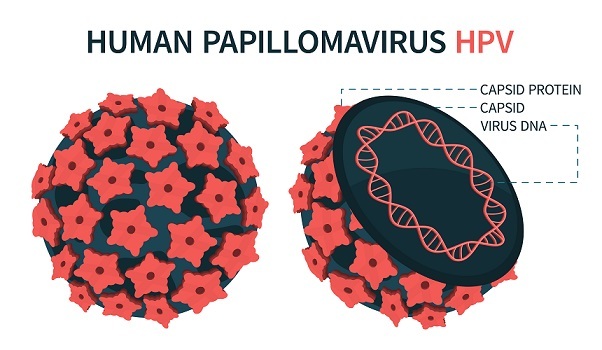
 Data Structure
Data Structure Networking
Networking RDBMS
RDBMS Operating System
Operating System Java
Java MS Excel
MS Excel iOS
iOS HTML
HTML CSS
CSS Android
Android Python
Python C Programming
C Programming C++
C++ C#
C# MongoDB
MongoDB MySQL
MySQL Javascript
Javascript PHP
PHP
- Selected Reading
- UPSC IAS Exams Notes
- Developer's Best Practices
- Questions and Answers
- Effective Resume Writing
- HR Interview Questions
- Computer Glossary
- Who is Who
What is Microbial Chemistry and Its Significance?
Introduction
Microbial chemistry or microbial biochemistry can be defined as the branch of microbiology that deals with the study of biochemical reactions taking place in microorganisms which help in their growth and development of mechanisms of pathogenesis.
This branch encompasses the study of the structure of microbial cells, metabolic reactions, and interaction of various macromolecules which provide detailed skeletal aspects and the basis of function associated with life.
Biomolecules Found in Microorganisms
Various types of biomolecules constitute the structure of microorganisms. Most of the microorganisms are prokaryotes except fungi which are eukaryotes. Every microbe contains a different component in its cell wall and produces different compounds for its defense.

Fig. Virus capsid
Every class of microbe produces different cell wall components. For example, carbohydrate present in the cell wall of bacteria is peptidoglycan and glycocalyx. The cell wall of fungi is made up of glucans, chitin, and glycoprotein. Protozoans do not have any cell wall instead they contain pellicles made up of proteins. Viruses also lack cell walls instead they contain a cover called a capsid made up of proteins that cover its DNA. archaea have distinct cell walls made up of isoprenyl groups and glycoproteins.
Metabolism in Microorganisms
Metabolism in any organism may lead to growth of the organism. Microbial metabolism is the way through which microorganisms obtain their nutrition and in turn energy for growth and reproduction. Metabolic processes in microorganisms can be divided into different types based on the pathway and utilization of raw material
1) Pathway by which microorganisms obtain carbon products to increase cell mass-
Autotrophic- can synthesize their own food from the carbon dioxide in the atmosphere.
Heterotrophic - are dependent on others for their nutrition.
Mixotrophic - they depend on organic matter as well as synthesize food by fixing carbon dioxide.
2) Pathway by which microorganisms obtain nutrition for growth and reproduction
Phototrophic - they depend on sunlight for the synthesis of food.
Chemotrophic - Food is synthesized using inorganic compounds obtained from the soil.
Metabolic Pathway
Every metabolic action in any organism is followed by either loss of energy or there is a transfer of energy. But the transfer of energy is not 100% efficient, so to maintain a stable amount of energy, microbes must take in more energy than needed.
Inorganic molecules that are taken in by microorganisms cannot combine without any external driving force, this driving force is known as the Energy of activation which can be heat or chemical energy and a biological catalyst called enzymes.
These enzymes can catalyze either a synthetic pathway called anabolism or a pathway that involves a breakdown of large molecules called catabolism. In addition to all these a chemical that acts as the driving force for the reaction called adenosine triphosphate (ATP) is also required.
Generally, all microorganisms use ATP making it energy currency of all cells and aiding in energy transfer. Whenever there is a catabolic reaction takes place ATP is generated which is used by the microbial cell for the anabolic processes.
-
Whenever there is a breakdown of an ATP molecule adenosine diphosphate (ADP) and a phosphate ion is generated. These two will re-join to form ATP. To generate ATP three very important processes are required namely-
Photosynthesis in photosynthetic microorganisms,
Respiration in the presence of oxygen (aerobic respiration)
Fermentation (anaerobic respiration)
For generation of ATP a steep proton gradient is required called chemiosmosis. This proton gradient across the plasma membrane act as the driving force for the union of ADP and phosphate that leads to the formation of ATP through electron transport chain.
Significance of Microbial Chemistry
Identification of Microorganisms
Correct identification is a must while studying the bacterial isolates or other microbes in the lab for the development of precise treatment measures against the microorganism. for example, during an epidemic, it is very important to correctly identify the causative organism to develop suitable measures to check the growth of the organism and eventually contain the epidemic.
Microorganisms can be identified in many ways by appearance, by examination of their metabolic and nutritional requirements, by analyzing various granular components stored by them, from the places they have been isolated, their biochemical pathway, etc. Nowadays automated techniques are available like MALDI-TOF.
Development of Drugs
Correct identification and deeper analysis of the various metabolic pathways carried out by the microorganisms can help scientists to develop effective drugs against the microorganism.
Agricultural Significance
Many microorganisms play an important role by fixing atmospheric nutrients and increasing soil fertility understanding the biochemistry of such microorganisms can increase soil fertility and crop yield with less harm to the environment.
Saving Environment
Not only do microorganisms fix atmospheric nutrients but also help in cleaning the environment by breaking down complex substances to simpler ones. For example, Pseudomonas putida is bacteria that can clean oil spills biodegradation.
Significance in Food Industry
Understanding the biochemistry of microbes can help in development of optimized conditions for their better and steady performance to get a uniform product in food and beverage industries.
Conclusion
Scientists like Urey and Millar have long back established the importance of microorganisms in the development of life on Earth. Since then, extensive studies have been going to understand the biochemical reactions carried out by them. Microorganisms have been of great use in many industries and the development of sustainable processes.
Understanding various reaction carried out by them and their interactions with the environment provide better insights for the development of drugs and environmental initiatives.

